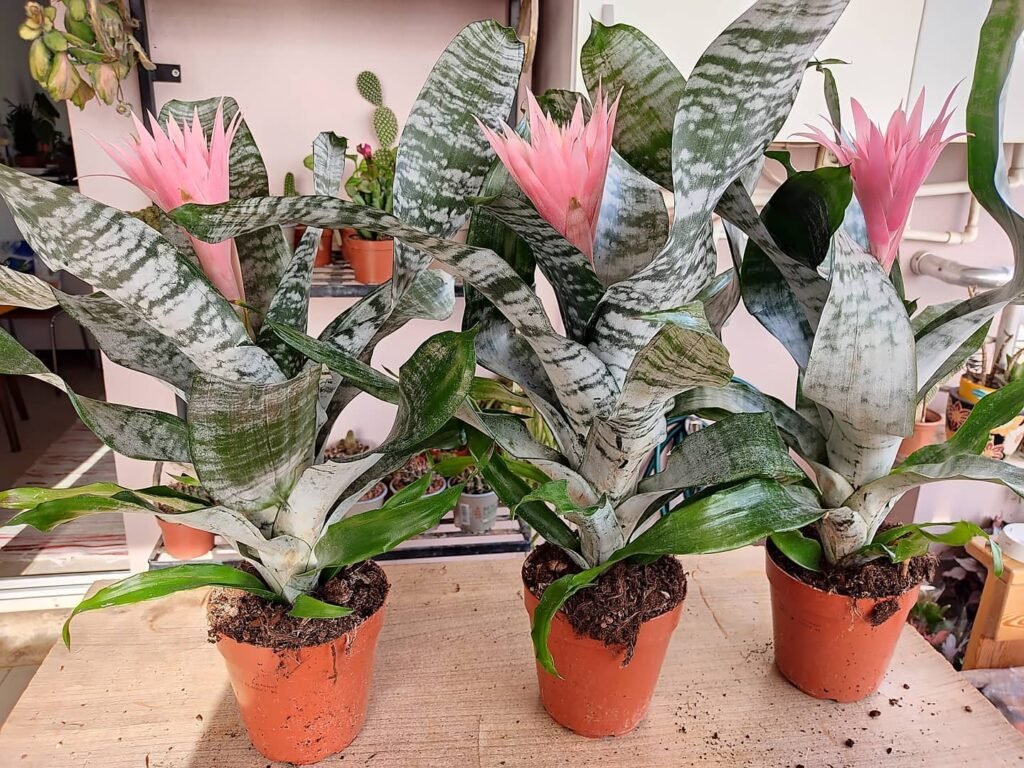Have you ever been captivated by the beauty of a flower? I remember the first time I laid eyes on the exquisite Aechmea fasciata, also known as the Urn Plant or silver vase bromeliad. Its silver-blue leaves formed a mesmerizing rosette, and its delicate pink flowers added a touch of elegance. I couldn’t help but be drawn to its unique charm and wanted to bring this exotic plant into my UK home.
However, caring for Aechmea fasciata requires some special attention to detail. From providing the right light conditions to understanding its watering needs, I embarked on a journey to ensure the health and vitality of my beloved silver vase plant. Through experimentation and learning, I discovered a set of care tips that transformed my Aechmea fasciata into a thriving masterpiece.
In this article, I want to share with you my personal experiences and insights on caring for Aechmea fasciata in the UK. Whether you’re a beginner or a seasoned plant enthusiast, these tips will guide you in maintaining the beauty of your own silver vase bromeliad. Together, let’s unlock the secrets of successful Aechmea fasciata care and create a botanical haven within our homes.
Appearance of Aechmea fasciata (Urn Plant)
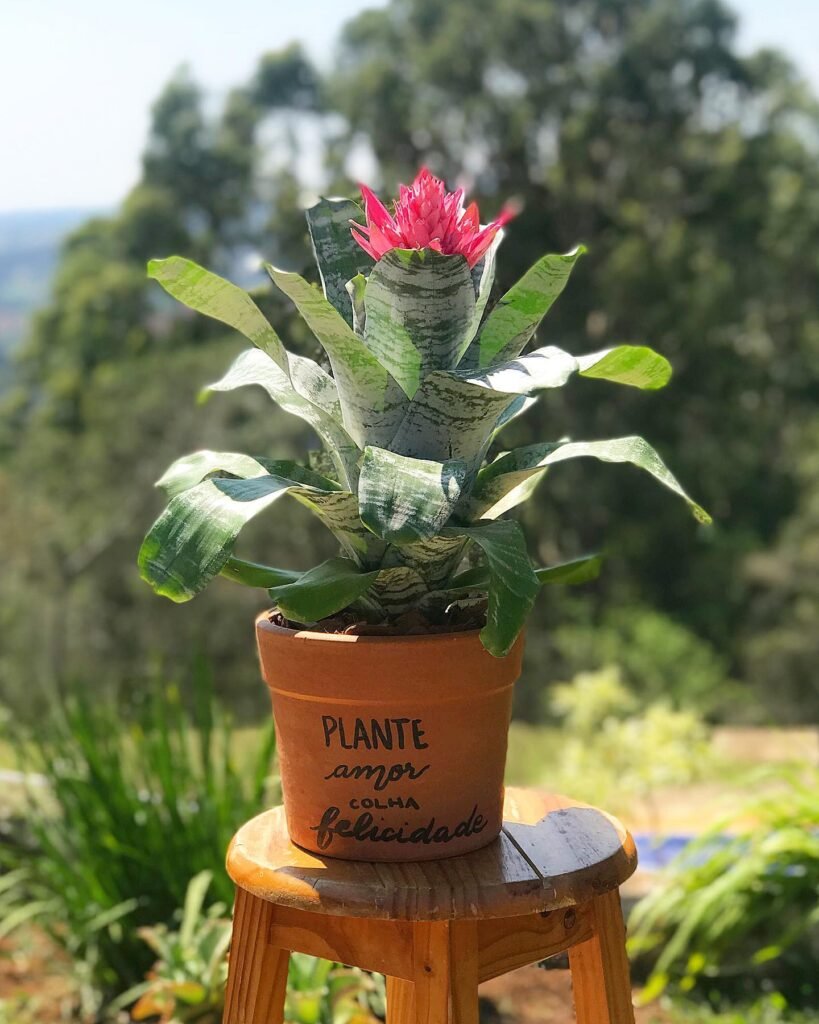
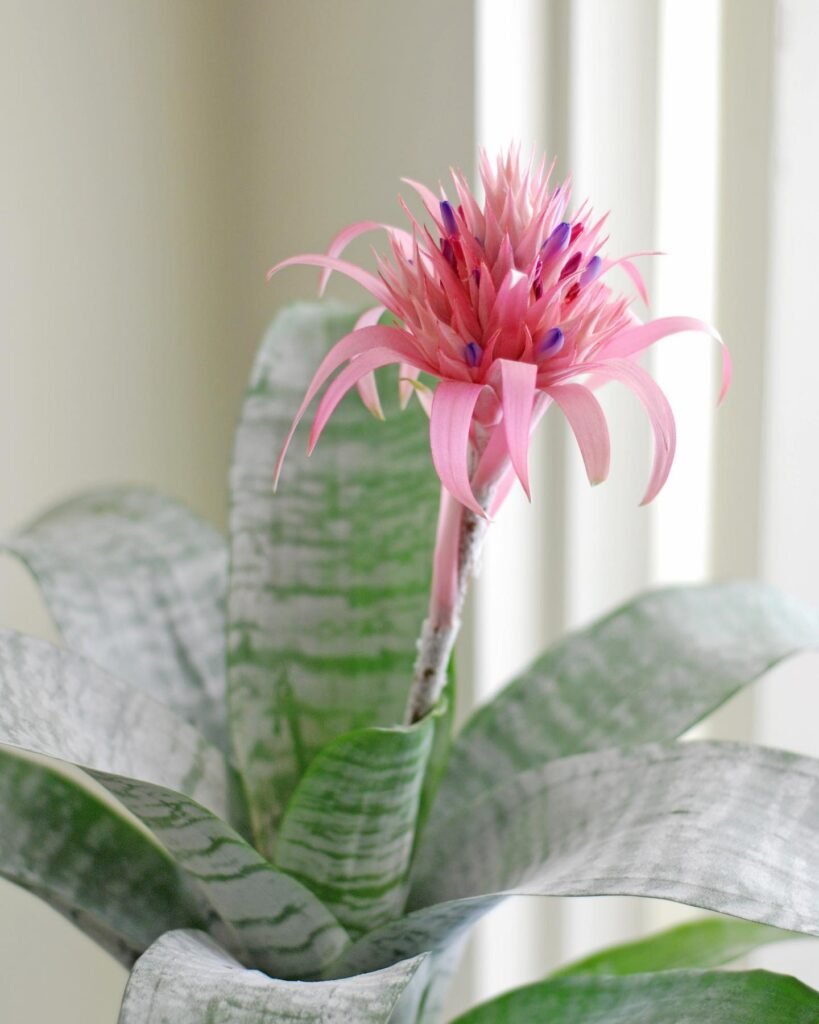
Aechmea fasciata boasts a remarkable appearance that is sure to catch the eye. Its leaves are thick and stiff, with a stunning silver-blue color that adds an elegant touch to any space. These leaves are arranged in a rosette shape, creating a central “urn” or well. This unique feature serves as a water collection point, adding to the plant’s visual appeal. A mature Urn Plant can reach up to 2 feet in height, making it a noticeable presence in any room.
One of the highlights of the Aechmea fasciata is its beautiful pink flowers. These vibrant blooms last for several weeks, creating a striking contrast against the silver-blue leaves. The Aechmea fasciata also produces “pups” or baby plants at its base, providing an opportunity for propagation and the creation of new plants.
Overall, the Aechmea fasciata’s appearance is a true testament to the wonders of nature, showcasing a perfect balance of form and function.
 The Aechmea fasciata is known as the “Urn Plant” because its central cup, or ‘urn’, collects water. This unique adaptation helps it thrive in its native South American rainforests, capturing nutrients and moisture directly from the air!
The Aechmea fasciata is known as the “Urn Plant” because its central cup, or ‘urn’, collects water. This unique adaptation helps it thrive in its native South American rainforests, capturing nutrients and moisture directly from the air!
Light Requirements for Aechmea fasciata
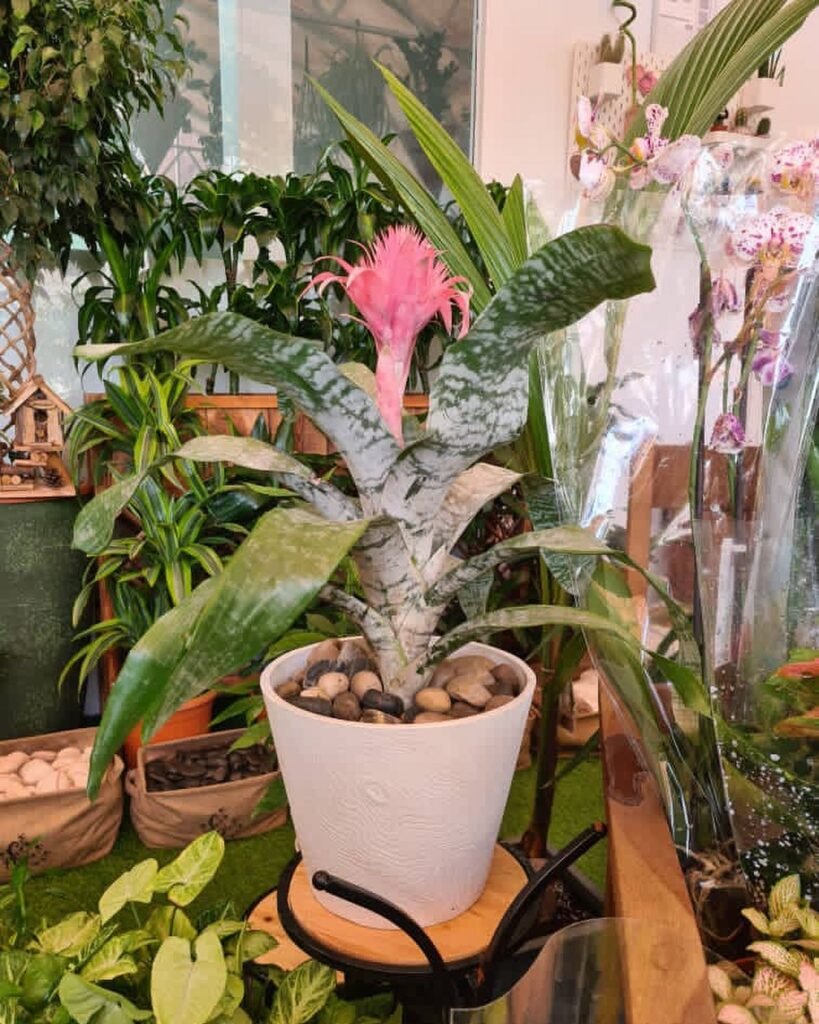

Aechmea fasciata thrives in bright, indirect light. To ensure the health and vitality of your Aechmea fasciata, it is important to provide it with the appropriate lighting conditions. Placing the plant in a spot that receives dappled shade or is out of direct sunlight is ideal. Direct sun can cause the leaves to burn, so it is best to avoid exposing the plant to too much sunlight.
While Aechmea fasciata can tolerate lower light conditions for short periods, consistent exposure to bright, indirect light is necessary for long-term growth and flowering. By providing adequate lighting, you can help your silver vase plant thrive and maintain its beautiful appearance.

Watering Tips for Aechmea fasciata (Urn Plant)
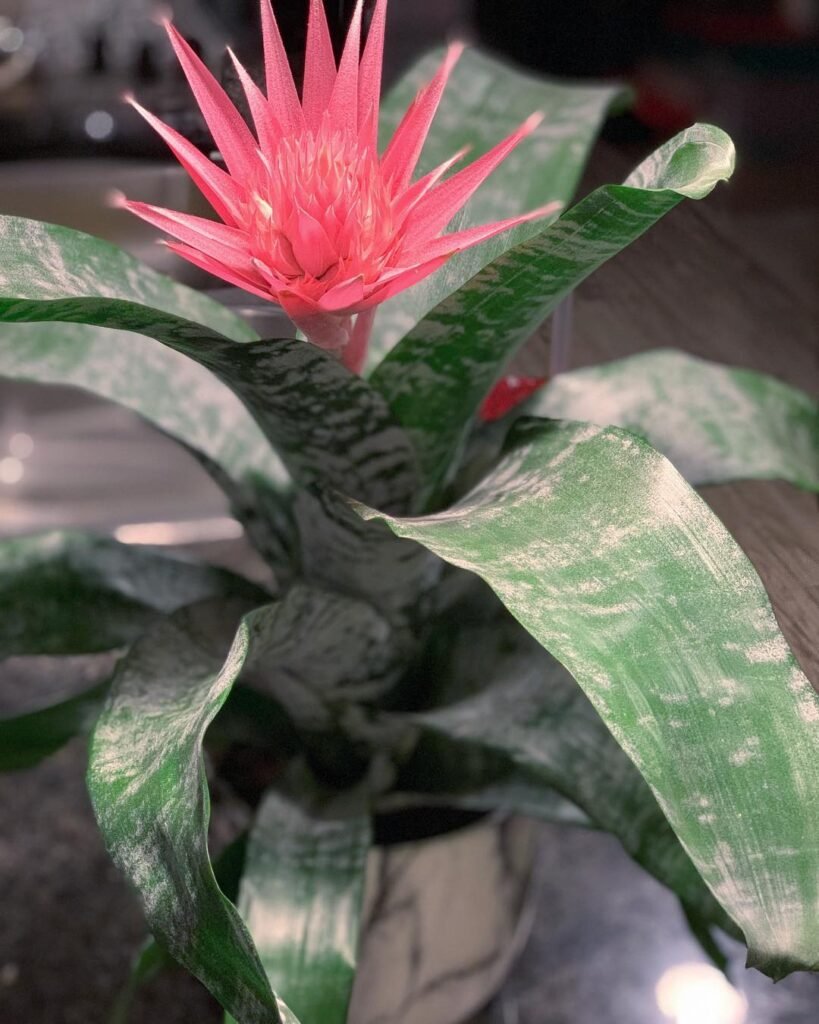

Caring for the Aechmea fasciata, an epiphytic specimen that thrives by absorbing moisture and nutrients directly through its leaves, necessitates a keen understanding of its natural proclivities. In the wild, this remarkable plant ingeniously collects water in its central urn, a feature that plays a pivotal role in its hydration and overall health. To replicate this natural mechanism and ensure your Aechmea fasciata flourishes within the confines of your home, I offer the following refined watering guidance:
Firstly, it’s paramount to maintain the central urn filled with water, achieving a depth of approximately one inch. This mimics the natural reservoir the plant would have in its native habitat, ensuring it has constant access to the moisture it so fundamentally relies on.
Opting for rainwater, distilled water, or filtered water is crucial in safeguarding your plant from the detrimental effects associated with chlorine and other minerals commonly found in tap water. These substances can harm the delicate balance of the plant, impeding its growth and affecting its vibrant appearance. Therefore, using water free from these elements is essential for the Aechmea fasciata’s well-being.
Furthermore, to avert the risk of water stagnation and the potential build-up of harmful pathogens, it is advised to empty and refresh the water in the urn every few weeks. This practice not only prevents undesirable odours but also ensures that your plant is provided with a fresh supply of water, mirroring the periodic rainfalls in its natural environment.
Adhering to these watering tips will significantly contribute to the health and vibrancy of your Aechmea fasciata, enabling it to thrive and bring a touch of its exotic charm to your indoor garden.

Fertilizing and Soil for Aechmea fasciata
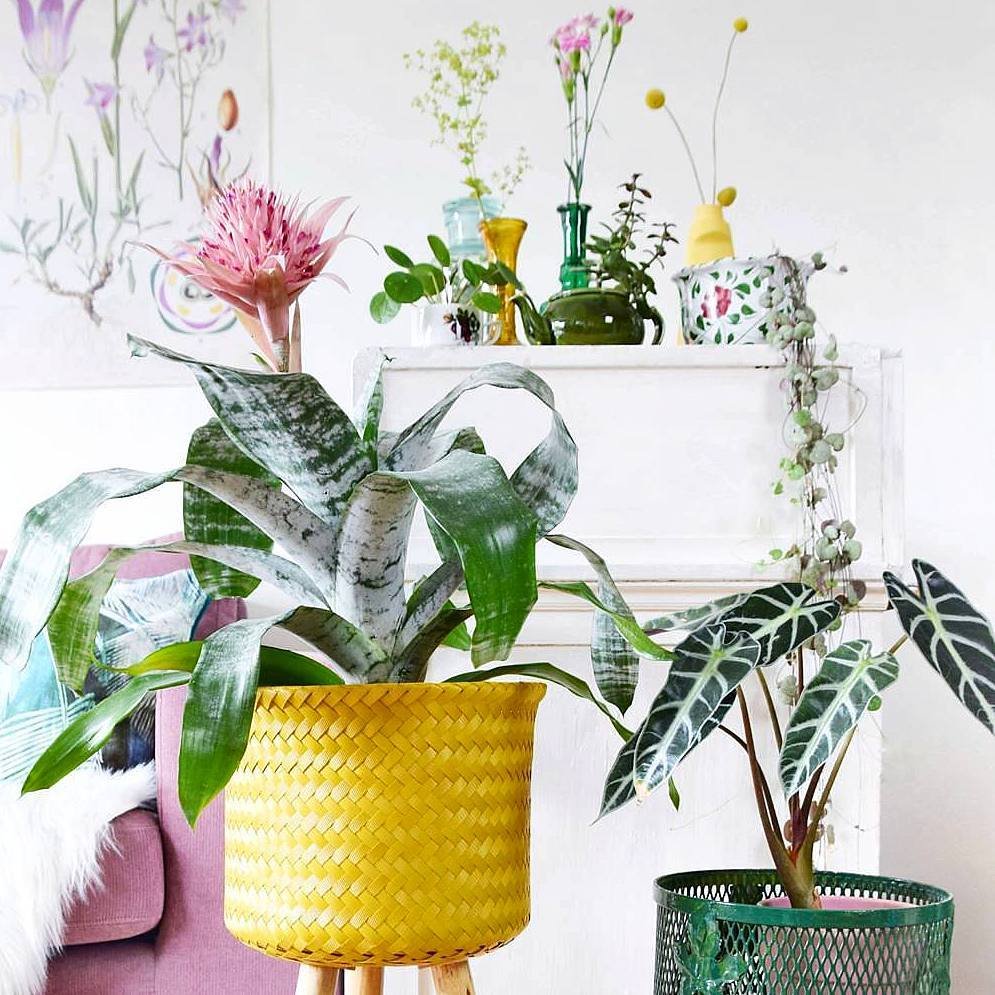
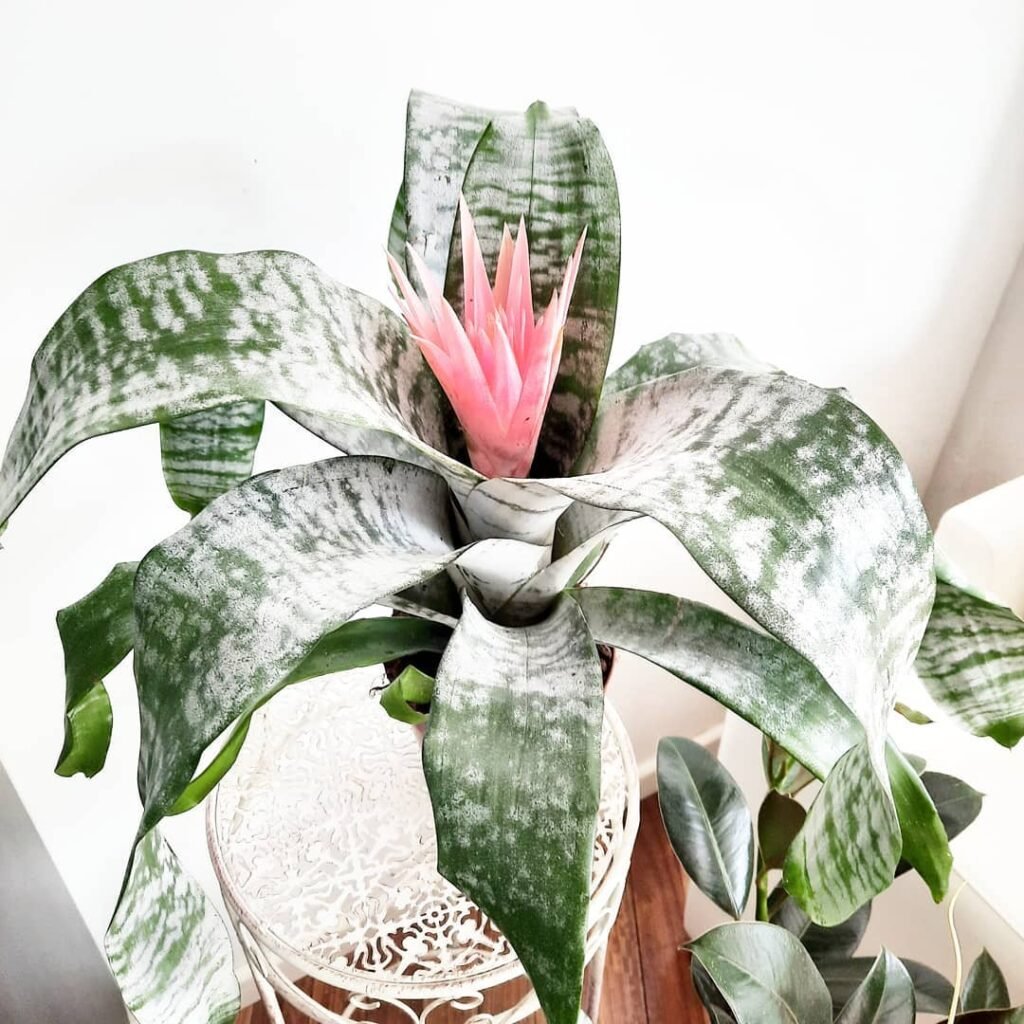
As a houseplant, Aechmea fasciata, also known as the Urn Plant or Silver Vase Plant, derives its nutrients naturally from matter that falls on its leaves. Therefore, regular fertilization is not necessary for this stunning bromeliad. However, if you choose to fertilize, it is crucial to use the right type and application method to ensure the plant’s health.
When fertilizing Aechmea fasciata, it is best to opt for a diluted all-purpose orchid food or a specialized bromeliad fertilizer. These products are specifically formulated to provide the necessary nutrients without causing harm to the plant. Note: Always follow the manufacturer’s instructions for proper dilution and application.
Avoid putting fertilizer directly in the urn of the Aechmea fasciata plant. This can lead to salt build-up, which may damage the plant’s delicate root system and hinder its overall growth.
For optimal growth, Aechmea fasciata prefers a well-draining soil mix. Using a mixture of orchid bark and coco coir or solely orchid bark creates a suitable growing medium. These options allow excess water to drain, preventing waterlogged roots and potential rot.
In summary, while regular fertilization is not a requirement for Aechmea fasciata, occasional feeding with a suitable fertilizer and ensuring a well-draining soil mix can support the long-term health and vitality of this captivating plant.

Pruning and Maintenance for Urn Plant
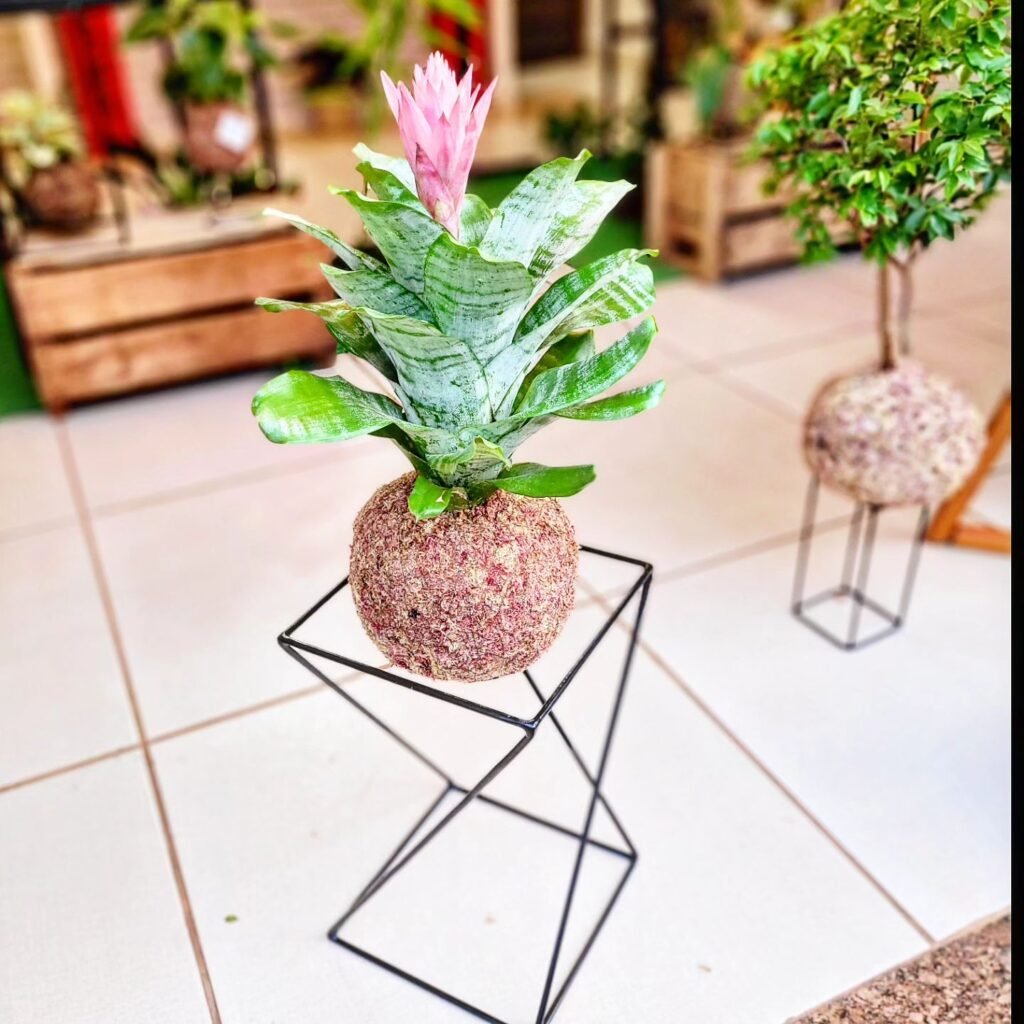
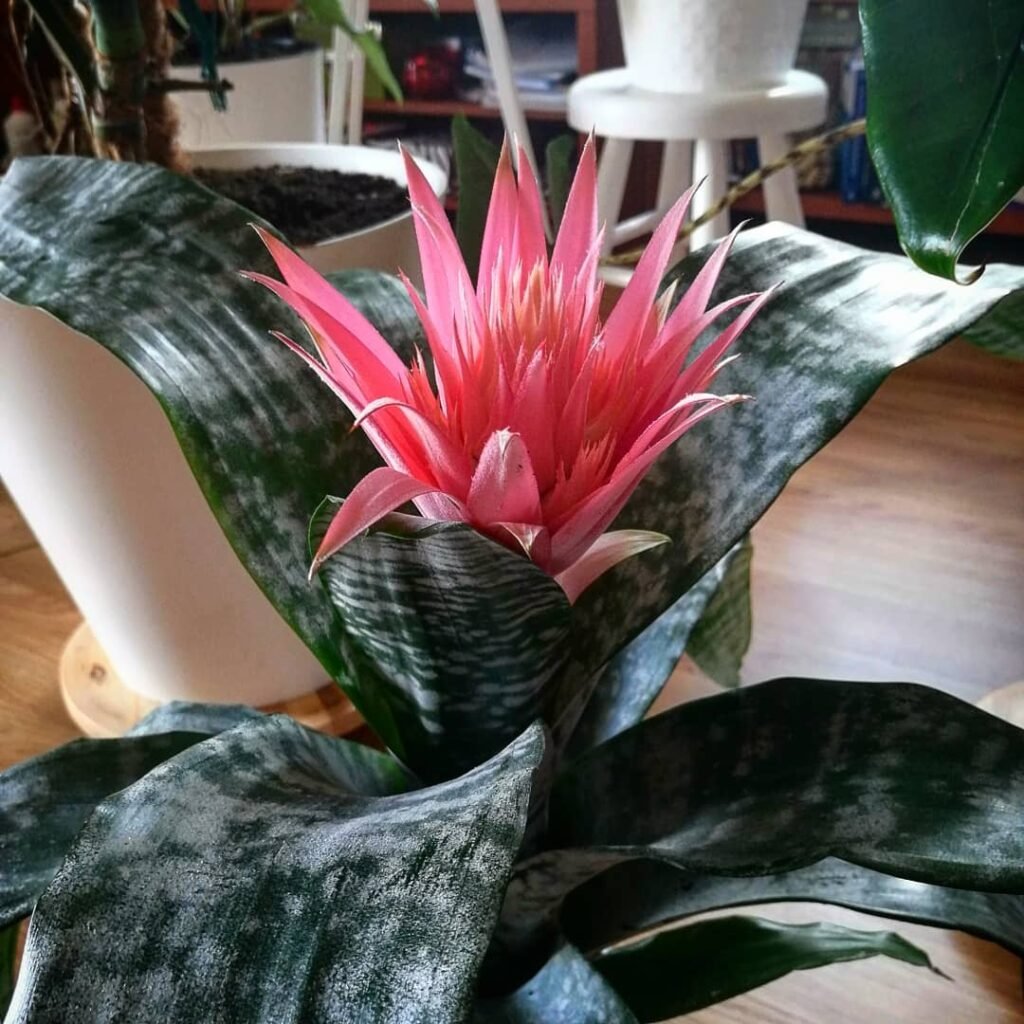
When it comes to caring for your Aechmea fasciata, minimal pruning and regular maintenance are key. By following a few simple steps, you can keep your urn plant healthy and thriving.
Once the beautiful pink flowers of your Aechmea fasciata start to fade, it’s time to trim the flower stalk. Using a sharp pair of scissors or pruners, cut the stalk down to the base of the tank or urn. This helps maintain the plant’s appearance and promotes new growth.
Additionally, it’s important to keep an eye out for any dead or yellowing leaves. These leaves not only detract from the plant’s overall beauty but can also indicate a potential problem. Gently remove any damaged or unsightly leaves by carefully pulling them away from the plant.
Regularly checking your urn plant for pests or diseases is crucial for its overall health. Inspect the leaves, roots, and soil for any signs of infestation or illness. If you notice any issues, take immediate action to prevent further damage. Consult with a plant professional or use appropriate pest control measures to address the problem.
Despite being relatively low maintenance, Aechmea fasciata still requires regular care to thrive. By giving it a little attention and following these pruning and maintenance tips, you can ensure that your urn plant remains healthy and beautiful for years to come.

Propagating Aechmea fasciata (Urn Plant)


Aechmea fasciata has the unique ability to produce “pups” or baby plants at its base, offering an excellent opportunity for propagation. Propagating Aechmea fasciata is a straightforward process that involves separating the pups from the parent plant and potting them up to form new plants.
To propagate Aechmea fasciata, wait until the pups are around one-third the size of the parent plant. At this stage, they are large enough to survive when separated. Using sharp, sterile scissors or a clean knife, carefully cut away the pups from the parent plant, ensuring to include some of their root systems.
Once the pups are separated, they can be potted up in individual containers using a well-draining potting mix, such as orchid bark or a mixture of orchid bark and coco coir. Place the pups in the potting mix, gently firming the soil around their roots. Water the newly potted pups thoroughly and place them in a location that receives bright, indirect light.
Alternatively, if you prefer a more aesthetic look, you can leave the pups to grow in the same pot as the parent plant. As they mature, the pot will become a cluster of beautiful Aechmea fasciata plants.

Repotting Tips for Aechmea fasciata
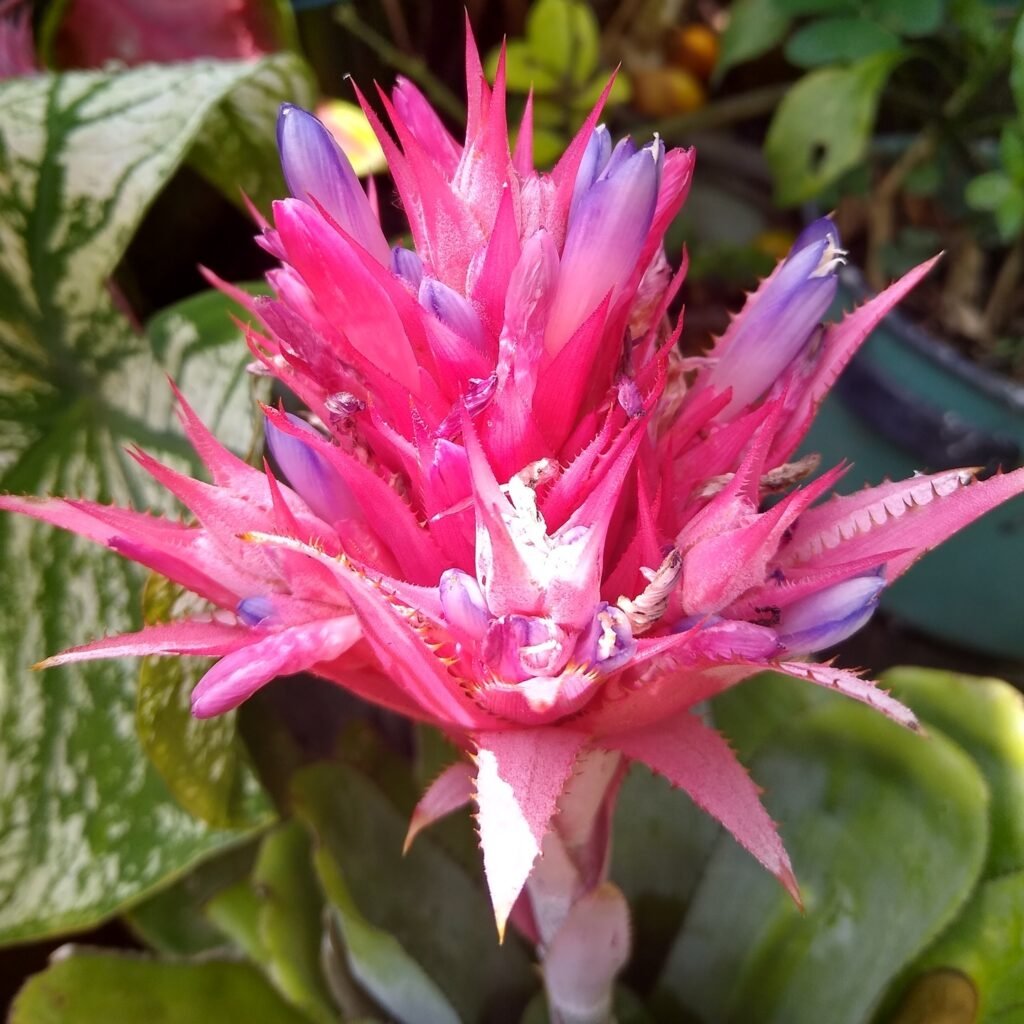
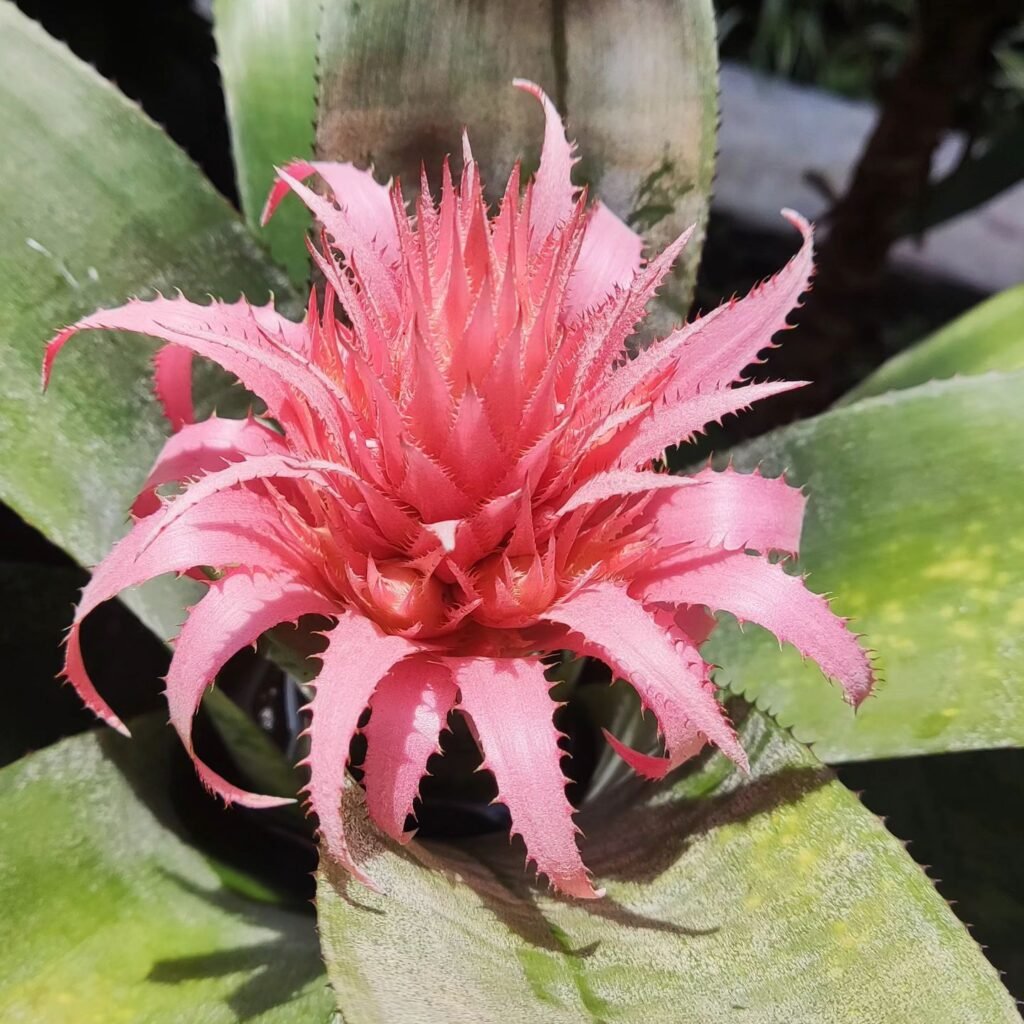
After several years of growth, Aechmea fasciata, also known as the Urn Plant, may require repotting. However, due to its relatively small root system, repotting is rarely necessary. It is best to repot the plant only when it has outgrown its current pot or when the potting mix has become depleted.
When deciding to repot your Aechmea fasciata, the most suitable times are in the spring, summer, or early fall when the plant is actively growing. This will give it the best chance to adapt to its new environment.
When repotting, it is essential to choose a well-draining potting mix that allows excess water to flow away from the roots. A combination of orchid bark and coco coir can create a suitable medium that replicates the plant’s natural habitat. Orchid bark provides excellent drainage, while coco coir retains moisture, striking the right balance for the plant’s needs.
During repotting, handle the plant with care to avoid damaging delicate roots. Gently remove the plant from its current pot, gently massaging the roots to loosen the potting mix. Place the plant in its new pot, ensuring that it sits at the same level as before. Fill the remaining space with the fresh potting mix, gently firming it around the roots.
After repotting, give your Aechmea fasciata some time to adjust to its new surroundings. Place it in a spot with bright, indirect light, and continue to follow the care guidelines for watering, fertilizing, and general maintenance to promote its health and vitality.
 Aechmea fasciata’s flower spike, despite its lush look, lasts up to 6 months. Its lasting bloom and striking pink bracts make it a top pick for brightening homes in the gloomier months.
Aechmea fasciata’s flower spike, despite its lush look, lasts up to 6 months. Its lasting bloom and striking pink bracts make it a top pick for brightening homes in the gloomier months.
Helpful Videos about Aechmea fasciata (Urn Plant)
Have a look at these great videos I’ve come across on looking after the Aechmea fasciata, or Urn Plant. They offer simple advice that makes caring for this plant really easy. Perfect if you’re just starting out with gardening! Feel free to check them out.
- How to Pot a Bromeliad + Care Guide for Aechmea Fasciata | Emileaves
FAQ about Aechmea fasciata (Urn Plant)

Need tips on caring for your Aechmea fasciata, or Urn Plant? You’ve found the right spot! Here are all the basics to help your plant thrive, from the right way to water to sorting out common problems.
Aechmea fasciata, or Urn Plant, is a striking bromeliad with broad, silver-striped leaves and a pink flower spike. It’s a popular indoor plant due to its exotic appearance and low maintenance needs.
In the UK, the Urn Plant is best grown indoors because it cannot tolerate the cold outdoor temperatures. It thrives in warm, humid conditions similar to its native Brazilian rainforests.
Water the central cup of the plant, ensuring it’s always partially filled, and mist the leaves regularly. The soil should be kept slightly moist but never waterlogged. Reduce watering in winter.
It prefers bright, indirect sunlight. Too much direct sun can scorch the leaves, while too little light will reduce its vitality and bloom potential.
Feed monthly during the growing season with a half-strength liquid fertiliser applied to the soil, not the central cup. Stop feeding in winter.
Aechmea fasciata usually flowers in response to specific light and water conditions. It may require a period of cooler temperatures or specific light exposure to initiate blooming, which can be challenging to replicate indoors.
It prefers temperatures between 18°C and 24°C. Avoid placing it in cold draughts or near radiators.
Use a well-draining potting mix designed for bromeliads or orchids. A shallow pot is ideal as the plant has a small root system.
Watch out for scale insects and mealybugs. Treat any infestations promptly with insecticidal soap or neem oil.
Yellowing leaves can be caused by overwatering, poor drainage, or exposure to cold temperatures. Adjust your care regimen accordingly.
Aechmea fasciata is not toxic to cats or dogs, making it a pet-friendly option for indoor gardening.
Gently wipe the leaves with a damp cloth to remove dust. Avoid using any leaf shine products.
After flowering, the mother plant will slowly begin to die. However, it will produce offsets, or “pups,” which can be separated and grown as new plants.
Wait until the pups are about one-third the size of the mother plant. Then, carefully separate them with a clean, sharp knife and pot them in their own containers.
It can take several years for a pup to mature and bloom. Patience is key as the plant focuses on growth before blooming.
While possible, its size and need for air circulation make it less suitable for terrariums than smaller bromeliads.
I hope this FAQ has been handy in guiding you on how to care for your Aechmea fasciata, or Urn Plant. If you’ve still got questions, just leave them in the comments. I’m here to help out. Gardening is all about growth and discovery, and there’s always something new to learn as your plants grow.
Conclusion
Caring for Aechmea fasciata in the UK requires attention to its specific needs. To ensure this exotic bromeliad thrives in your home, follow these care tips:
Provide bright, indirect light for your Aechmea fasciata. Placing it in a spot that receives dappled shade or is out of direct sunlight will prevent leaf burn.
Regularly water your plant with clean water, ensuring the central urn is filled to a depth of one inch. Using rainwater, distilled water, or filtered water is recommended to prevent any harm from tap water.
Use a well-draining potting mix, such as orchid bark or a mix of orchid bark and coco coir, to ensure proper drainage and prevent root rot. This will contribute to the overall health of your Aechmea fasciata.
Minimal pruning is required for this low-maintenance plant. Remove any faded flower stalks and yellowing leaves to maintain its appearance. Regularly check for pests or diseases and take appropriate action if necessary.
Propagation is possible through the “pups” or baby plants that grow at the base of your Aechmea fasciata. Wait until the pups are around one-third the size of the parent plant before separating them.
Repot your Aechmea fasciata only when necessary, using a well-draining potting mix. Spring, summer, or early fall are the best times for repotting.
With these care tips, your Aechmea fasciata can thrive and bring exotic beauty to your UK home. Enjoy the vibrant foliage and unique appearance of this silver vase plant.

